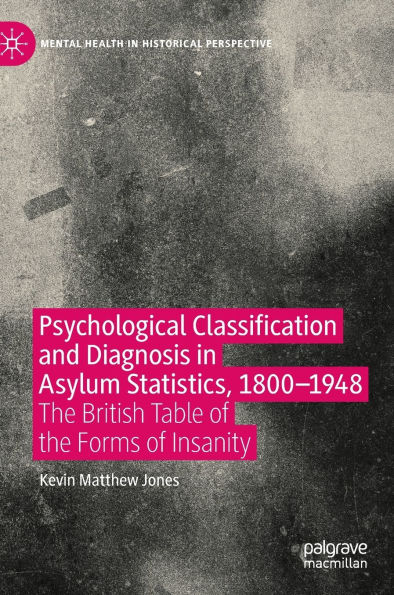The classification at the centre of these debates, the Medico-Psychological Association’s Table of the Forms of Insanity, caused deep divisions that took decades to resolve and hampered efforts to develop asylum medical statistics on psychological diagnosis. The use of the classification in national medical statistics was tantamount to being the standard classification for the asylum. As the appeal of statistics grew within medical circles, the debates intensified, and the divisions grew deeper. Despite lofty aims and years of debate, attempts to develop national statistics on psychological diagnosis had achieved very little by the beginning of the twentieth century. The failure of these efforts, hampered by the unwieldy processes adopted by Lunacy administration, led to the Table of the Forms falling into obscurity after its final set of revisions in 1932.
In presenting for the first time the debates surrounding the Table of the Forms of Insanity, this volume calls for a re-evaluation of the history of psychiatric classification through its exploration of the underappreciated links between the standardisation of psychological diagnosis and the development of mental health statistics. By interrogating the links between asylum governance and the clinic, this book presents considerations on classification that still resound today, and provides valuable reading for scholars interested in the social history of medicine, the history of psychiatry, and the history of science.
The classification at the centre of these debates, the Medico-Psychological Association’s Table of the Forms of Insanity, caused deep divisions that took decades to resolve and hampered efforts to develop asylum medical statistics on psychological diagnosis. The use of the classification in national medical statistics was tantamount to being the standard classification for the asylum. As the appeal of statistics grew within medical circles, the debates intensified, and the divisions grew deeper. Despite lofty aims and years of debate, attempts to develop national statistics on psychological diagnosis had achieved very little by the beginning of the twentieth century. The failure of these efforts, hampered by the unwieldy processes adopted by Lunacy administration, led to the Table of the Forms falling into obscurity after its final set of revisions in 1932.
In presenting for the first time the debates surrounding the Table of the Forms of Insanity, this volume calls for a re-evaluation of the history of psychiatric classification through its exploration of the underappreciated links between the standardisation of psychological diagnosis and the development of mental health statistics. By interrogating the links between asylum governance and the clinic, this book presents considerations on classification that still resound today, and provides valuable reading for scholars interested in the social history of medicine, the history of psychiatry, and the history of science.

Psychological Classification and Diagnosis in Asylum Statistics, 1800 - 1948: The British Table of the Forms of Insanity
355
Psychological Classification and Diagnosis in Asylum Statistics, 1800 - 1948: The British Table of the Forms of Insanity
355
Product Details
| ISBN-13: | 9783031461538 |
|---|---|
| Publisher: | Springer Nature Switzerland |
| Publication date: | 03/31/2025 |
| Series: | Mental Health in Historical Perspective |
| Edition description: | 2024 |
| Pages: | 355 |
| Product dimensions: | 5.83(w) x 8.27(h) x (d) |
